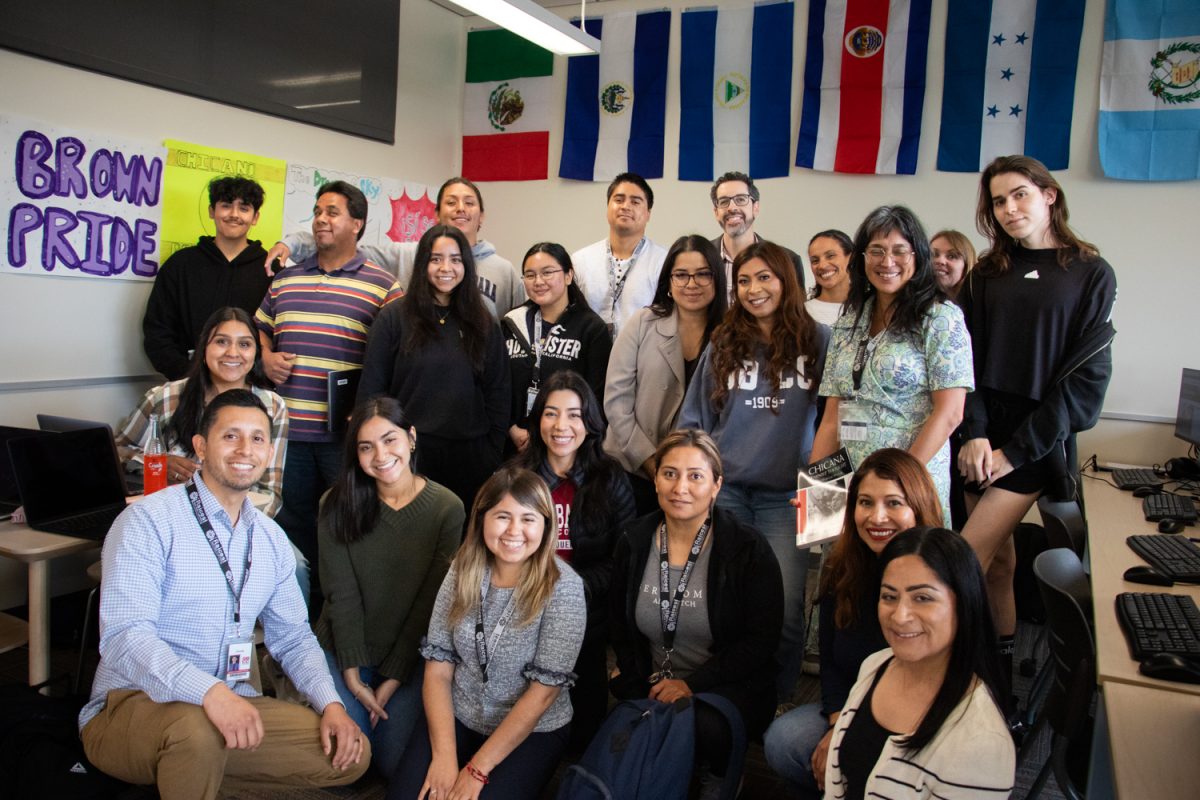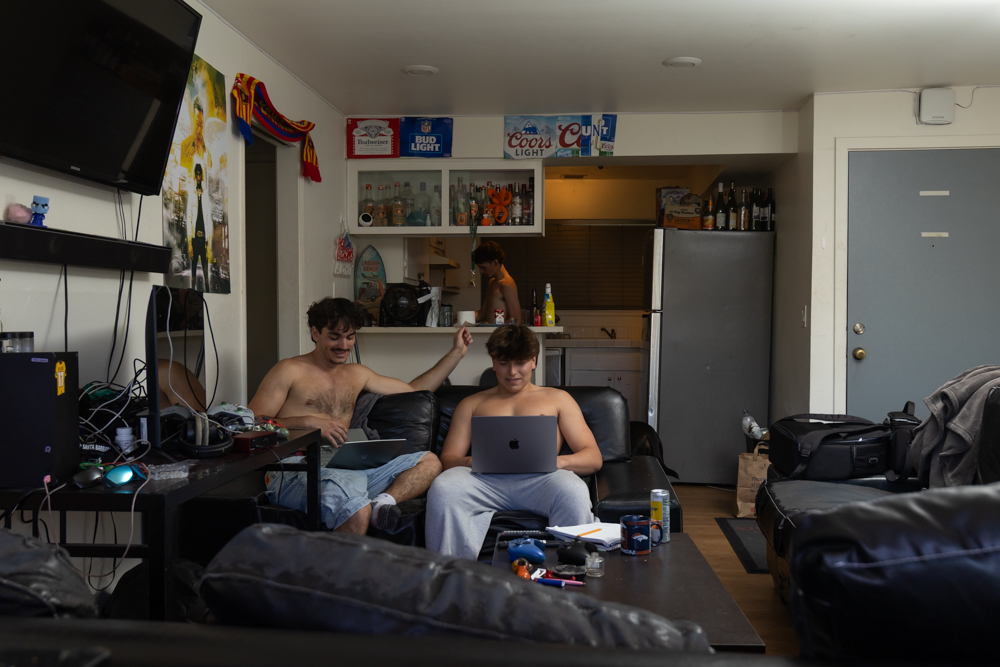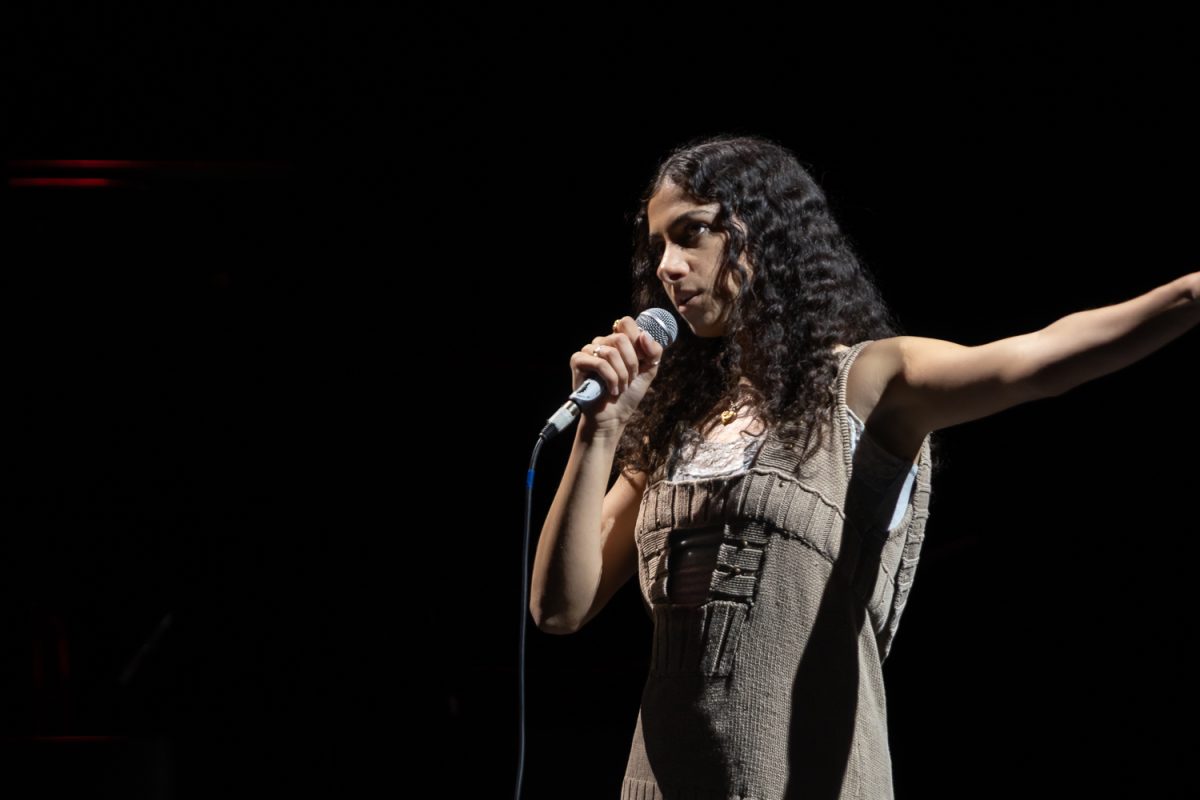On the second floor of the West Campus Center stands the Raíces program: a beacon of culture and community for students at City College. The program was launched in 2023 and piloted by Melissa Menendez, the Raíces faculty lead, and Sergio Lagunas, the program coordinator.
“It’s going to be about liberation, about empowerment, about advocacy,” said Lagunas, explaining the original intent of its conception. “A lot of times, programs are created, and those are the missing pieces.”
Lagunas’ office, adorned with art of Lotería cards, an Aztec sunstone, and a long row of books on history and empowerment, serves as a vibrant reminder of the Raíces program’s roots in celebrating Hispanic and Latiné culture.
“What we aspire to be is a place and a program structured to help students navigate what exists [at City College] and actually go in there with faculty and make the [students’] experience better,” Lagunas said.
“¡Raíces: First Year and Beyond!” was first established in October 2021 after receiving a sum of $3 million from the U.S. Department of Education’s ‘Hispanic Serving Institution’ (HSI) grant. As of 2023, over 40% of City College’s student body identified as Hispanic.
The grant supplies the Raíces program with funding for a span of five years, according to Lagunas.
“Those five years are like the experimental years. You’re piloting, you’re trying things out; if it doesn’t work, rework it,” Lagunas said.
With significant funding and a determination to create a thriving, equitable student community, Raíces hosts a number of events throughout the year both on and off campus.
Lagunas reviewed several events they had put together in the previous few months: a film screening of the movie ‘Walkout,’ a poetry workshop with Emma Trelles, Santa Barbara’s ninth Poet Laureate, and a walk through Ortega Park to view 15 cultural murals.
Raíces students and faculty also recently hosted the “first campus Unity March, which was very healthily attended,” Lagunas said.
The Raíces program’s headquarters are located on the second floor of the West Campus Center, in rooms 206 and 207. Together, these rooms have been deemed “La Plazita” and provide a place for students to connect with peers, get schoolwork done, and receive academic counseling from professionals.
At a colorfully decorated desk in the corner of La Plazita sits Nathalie Quintero, the Raíces student program assistant, who describes her responsibilities to include “student-facing programming, as well as the physical space and the student interns, which we call ‘collegas,’ ‘colleagues’ in Spanish.”
According to Quintero, the program strives to promote community, culture, and connection by having a physical space for students to cultivate said community and receive consistent help from their peers and advisors.
“We do our best to be culturally responsive. Most people might look at Raíces and be like, ‘it’s tied to one specific Latiné origin,’ and it’s not,” Quintero said. “We do our best to be inclusive to all Latiné cultures and cultures that are not Latiné but have similar backgrounds.”
According to Lagunas, Raíces began as a Hispanic serving program due to its funding, but because community and connection are primary goals, the program is not exclusive to students of Hispanic or Latiné origin.
“At the end, it’s really just empowerment; embracing who you are and not having to leave your identity at the door, whether it be at Raíces, in class, or starting a new club,” Quintero said. “It’s really empowering the students to be themselves.”
Quintero went over a myriad of classes offered through Raíces, where instructors undergo a year of training to make their courses more attuned to students’ needs. ‘Gen-Eds’ such as English 110 and a few math classes were present, meaning those instructors have been trained in the ethics processes of Raíces to promote an overall sense of community.
According to Lagunas, many words used in lesson plans are outdated, violent, or toxic. One goal of Raíces’ instructor training program is to “review the lesson plans and syllabus” and replace any language that may invoke a negative reaction from students, no matter how subliminal.
“Let’s say you’re looking at an English class,” Lagunas began. “What is that term called, and can it be called something else? Even the [phrase] ‘imposter syndrome,’ changing that to ‘imposter phenomenon.’
“Just by saying that, students’ shoulders drop down, they’re more relaxed, they feel safe. When you feel safe, you’re able to learn.”
To create their lesson plans and research designs, both Lagunas and Quintero explained that they will simply ask students for suggestions, allowing their voices to be heard and identifying their value to the program as individuals and as a collective.
“When you join the program, you’re entering a space of co-creation, whether you’re sharing your ideas for programming, or if it’s co-creation in class, like sharing lived experience,” Quintero said.
The Raíces program is open to all student applicants and has no prerequisites to being a member. According to the Raíces website, all that is required of students is to attend Raíces courses and meet with a Raíces academic counselor every semester.
“There’s so much crossover, not only because of your ethnicity, culture, or background, but the other identities you hold. Being a parent [or] a commuting student– there’s so much crossover and intersectionalities between a lot of different ethnicities,” Quintero said. “We accept anybody, and we hope we communicate that.”




![Milton Alejandro Lopez Plascencia holds a flag showcasing the United States and Mexico on Feb. 7 in Santa Barbara, Calif. “It’s heartbreaking to see what is happening all across the country,” Lopez Plascencia said. “I [want] my voice to be heard by the community.”](https://www.thechannels.org/wp-content/uploads/2025/05/MGSImmigration-1-1200x800.jpg)


![The new Dean of Social Science, Fine Arts, Humanities and English, Eric Hoffman beams on May 2 in Santa Barbara, Calif. "My major professor in college [inspired] me," Hoffman said. "You can really have a positive impact on people's lives in education."](https://www.thechannels.org/wp-content/uploads/2025/05/MGSHoffman-2-1200x800.jpg)







